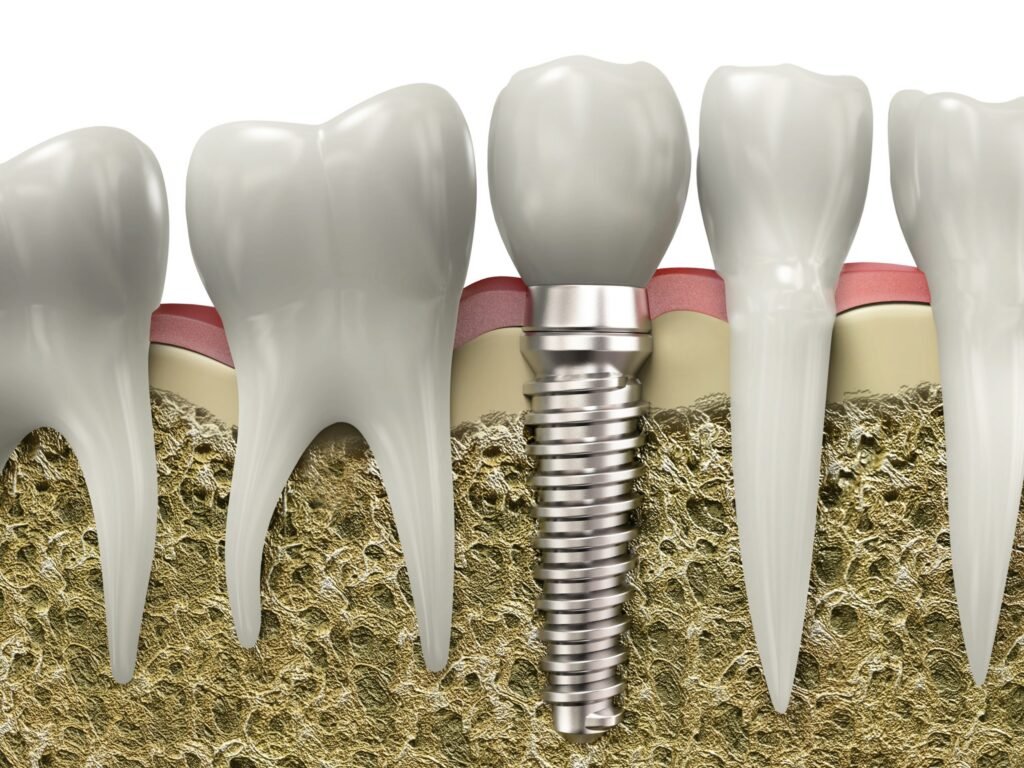Dental implants offer a durable and natural-looking solution for replacing missing teeth. However, not all implants are created equal. There are several types, each suited for different needs based on the patient’s oral health, jawbone structure, and overall treatment goals. Here’s a comprehensive breakdown to help you understand the different types of dental implants and how to choose the right one.
1. Endosteal Implants (Most Common Type)
What They Are:
Endosteal implants are placed directly into the jawbone and act as artificial tooth roots. They are typically made of titanium and shaped like small screws.
Best For:
- Patients with a healthy, dense jawbone
- Those looking for a long-term, fixed solution for missing teeth
Pros:
- Strong and stable
- Long-lasting (can last decades with proper care)
- High success rate
Cons:
- Requires sufficient bone density
- Involves a longer healing process
2. Subperiosteal Implants
What They Are:
Instead of being placed into the bone, subperiosteal implants sit on top of the jawbone but under the gum tissue. A metal frame supports one or more posts that protrude through the gum to hold the prosthesis.
Best For:
- Patients with insufficient bone height or density who want to avoid bone grafting
- Those not eligible for endosteal implants
Pros:
- Less invasive than endosteal implants
- Suitable for patients with jawbone loss
Cons:
- Less stable than endosteal implants
- Typically not as long-lasting
- More risk of implant movement
3. Zygomatic Implants
What They Are:
Zygomatic implants are much longer than traditional implants and are anchored into the zygomatic bone (cheekbone) instead of the upper jaw.
Best For:
- Patients with severe bone loss in the upper jaw
- Those who cannot undergo bone grafting
Pros:
- Avoids the need for bone grafts or sinus lifts
- Offers immediate support for prosthetic teeth
Cons:
- Complex surgical procedure
- Limited to experienced implant specialists
- Higher cost and recovery time
4. Mini Dental Implants (MDIs)
What They Are:
Mini implants are narrower than traditional implants and are used primarily to stabilize lower dentures.
Best For:
- Patients with less bone density
- Those looking for a less invasive, quicker alternative
- Denture wearers needing better fit and retention
Pros:
- Less invasive and faster healing
- No need for bone grafting in many cases
- More affordable
Cons:
- Not as strong or durable as standard implants
- Usually not suitable for full-mouth restoration
5. All-on-4® Implants
What They Are:
This method uses four strategically placed implants in each jaw to support a full arch of prosthetic teeth.
Best For:
- Patients missing all or most teeth in an arch
- Those seeking full-mouth rehabilitation without individual implants
Pros:
- Immediate function with same-day teeth
- Requires fewer implants
- Avoids bone grafting in many cases
Cons:
- Higher upfront cost
- May require temporary teeth before final prosthetics
How to Choose the Right Dental Implant for You
1. Bone Health
- Good Bone Density: Endosteal implants are ideal.
- Poor Bone Density: Consider subperiosteal, zygomatic, or mini implants.
2. Number of Missing Teeth
- Single Tooth: Endosteal implant with a crown.
- Multiple Teeth: Implant-supported bridges or All-on-4.
- Full Arch: All-on-4, implant-retained dentures, or zygomatic implants.
3. Time and Budget
- Limited Budget/Time: Mini implants or dentures with implant support may be suitable.
- Willing to Invest in Long-Term Solution: Endosteal or All-on-4 implants.
4. General Health
- Certain medical conditions (like uncontrolled diabetes or osteoporosis) may affect your eligibility for certain implant types.
5. Personal Preference
- Do you prefer a fixed (non-removable) solution?
- Are you okay with a longer treatment timeline for a more permanent result?
Conclusion
There’s no one-size-fits-all when it comes to dental implants. The best type for you depends on a combination of factors including your jawbone health, the number of missing teeth, personal preferences, and budget. Consulting with a dental implant specialist is essential—they can evaluate your oral condition and recommend the most appropriate implant type to restore your smile, function, and confidence.




